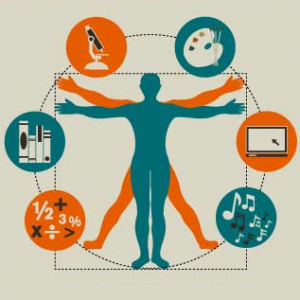Blended learning is a promising approach with the potential to transform Canadian higher education. To realize its full potential, it now requires strategy, resources and better integration with institutional goals.

That’s the conclusion of the Innovative Practices Research Project, prepared by the Collaboration for Online Higher Education Research (COHERE) published in 2010. The report, funded by Human Resources and Skills Development Canada, (HRSDC) explores the current status of blended learning in Canadian higher education. It showcases examples of innovative practices among member universities and identifies the challenges and barriers that impede the extent to which Canadian institutions are able to adopt these practices.
“We know blended learning is a promising practice worldwide,” said Kathleen Matheos, Associate Dean of Extended Education at the University of Manitoba and coordinator of the report. “There’s ongoing research at the Sloan Consortium in the U.S. and the EU Centres of Excellence, and we wanted to get a snapshot of what’s happening
in Canada.”
Snapshot of blended learning in Canada
Specifically, the report provides:
- an overview of leading innovative practices in blended learning
- a summary of current evidence on the effectiveness of innovative blended learning practices
- an overview of the extent to which Canadian universities are adopting these practices and,
- a brief overview of the key barriers to the expansion of effective blended learning in Canadian universities.

What exactly is blended learning?
Blended learning is the organic integration of thoughtfully selected and complementary face-to-face and online approaches and technologies (Garrison and Vaughn 2008). Examples of interactive technologies include blogs, wikis, social media, video/audio conferencing, discussion forums, virtual environments, lecture capturing, iPads or mobile technologies that have been integrated into blended learning environments to enhance student engagement and learning.
Benefits are numerous
According to the respondents’ surveys, interviews and research projects conducted at the eight* member universities, blended learning practices have resulted in improved teaching and learning, greater flexibility for learners, greater student satisfaction, improved student performance, a confluence of literacies for the knowledge economy, and better use of resources.
Barriers and challenges
The universities identified several barriers and challenges that impacted the blended learning activities and agendas at their institutions. They include faculty resistance, student reluctance to move from a passive to an active role, insufficient pedagogical and technical support, the absence of institutional policy and strategic plan to support and sustain blended learning practices. Despite these barriers, the report states, blended learning at Canadian universities continues to grow.
Strategic integrated approach
According to respondents, several things need to occur for blended learning at Canadian universities to move from individual faculty and department initiatives to successful and sustained integration at the institutional level.
“We learned from this research that we’re all doing components of blended learning in individual departments and faculties,” – Kathleen Matheos
“What we need now is to do it strategically so it’s inline with our strategic foundational documents and academic plans.” – Kathleen Matheos
Moving forward
The report concludes by stating that without a clear understanding of the potential benefits of blended learning from both a teaching and learning perspective, and support for both faculty and students to gain technology literacy, we will continue to see digital technologies used to supplement and duplicate current practices rather than reach their full potential as truly innovative practices.
“We hope this report gives institutions a sense of what’s possible. We know blended learning will continue to evolve and that will be part of our discussion and follow up at the 2013 COHERE conference,” – Kathleen Matheos
* Note: The findings in this report are limited to COHERE members and do not include innovative blended learning practices at other post-secondary education institutions in Canada. The universities that responded are University of Calgary, Mount Royal University, York University, University of Manitoba, Memorial University, University of Regina, University of Waterloo and University of Saskatchewan.
Notable Quotes
“We know that blended learning is a promising practice worldwide. There’s ongoing research at the Sloan Consortium in the US and the EU Centres of Excellence, and COHERE wanted to get a snapshot of what’s happening in Canada.” – Kathleen Matheos.
“We learned from this research that we’re all doing components of blended learning in individual departments and faculties, What we need now is to do it strategically so it’s inline with our strategic foundational documents and academic plans.” – Kathleen Matheos
“We hope this report gives institutions a sense of what’s possible. We know blended learning will continue to evolve and that will be part of our discussion and follow up at the 2013 COHERE conference,” – Kathleen Matheos.
Learn More:
- Sloan Consortium research
- EU Centres of Excellence in Canada
- COHERE Conference
- COHERE research papers (including the report on blended learning)
Image courtesy of Knewton @ http://www.knewton.com
